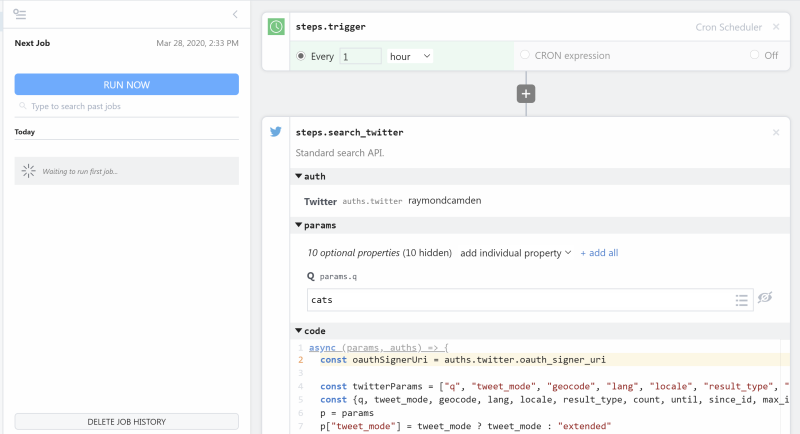What do you want to automate
with HTTP / Webhook and Bugsnag?
Prompt, edit and deploy AI agents that connect to HTTP / Webhook, Bugsnag and 3,000+ other apps in seconds.
Trusted by 1,000,000+ developers from startups to Fortune 500 companies
Popular Ways to Connect HTTP / Webhook with Bugsnag#
Popular HTTP / Webhook and Bugsnag Triggers#
Get a URL and emit the full HTTP event on every request (including headers and query parameters). You can also configure the HTTP response code, body, and more.
Get a URL and emit the HTTP body as an event on every request
Emit new event when an existing error receives a new occurrence.
Emit new event when a new release version is deployed to a selected project.
Popular HTTP / Webhook and Bugsnag Actions#
Create a new project for a specific organization in Bugsnag. See the documentation
Send an HTTP request using any method and URL. Optionally configure query string parameters, headers, and basic auth.
Send an HTTP GET request to any URL. Optionally configure query string parameters, headers and basic auth.
Send an HTTP POST request to any URL. Optionally configure query string parameters, headers and basic auth.
Update an the severity status of an error in Bugsnag. See the documentation
Overview of HTTP / Webhook#
Build, test, and send HTTP requests without code using your Pipedream workflows. The HTTP / Webhook action is a tool to build HTTP requests with a Postman-like graphical interface.

Point and click HTTP requests
Define the target URL, HTTP verb, headers, query parameters, and payload body without writing custom code.

Focus on integrating, not authenticating
This action can also use your connected accounts with third-party APIs. Selecting an integrated app will automatically update the request’s headers to authenticate with the app properly, and even inject your token dynamically.

Pipedream integrates with thousands of APIs, but if you can’t find a Pipedream integration simply use Environment Variables in your request headers to authenticate with.
Compatible with no code actions or Node.js and Python
The HTTP/Webhook action exports HTTP response data for use in subsequent workflow steps, enabling easy data transformation, further API calls, database storage, and more.
Response data is available for both coded (Node.js, Python) and no-code steps within your workflow.

Connect HTTP / Webhook#
// To use any npm package on Pipedream, just import it
import axios from "axios"
export default defineComponent({
async run({ steps, $ }) {
const { data } = await axios({
method: "GET",
url: "https://pokeapi.co/api/v2/pokemon/charizard",
})
return data.species
},
})
Overview of Bugsnag#
The Bugsnag API enables you to interact programmatically with Bugsnag data, letting you manage and access error reports, project settings, and release tracking for your applications. With Pipedream's integration, you can automate workflows that respond to new errors, aggregate error data for analysis, or synchronize error information with other tools in your development stack.
Connect Bugsnag#
import { axios } from "@pipedream/platform"
export default defineComponent({
props: {
bugsnag: {
type: "app",
app: "bugsnag",
}
},
async run({steps, $}) {
return await axios($, {
url: `https://api.bugsnag.com/user`,
headers: {
"Authorization": `token ${this.bugsnag.$auth.api_token}`,
},
})
},
})
Community Posts#

